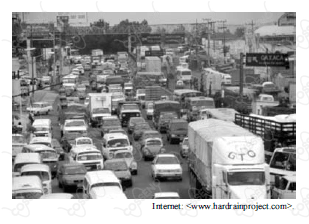
[1] Mexico City once had the world’s worst air, with skies so poisonous that birds dropped dead in flight. Today, efforts to clean the smog are showing visible progress, revealing [4] stunning views of snow-capped volcanoes — and offering a model for the developing world. International experts are praising the country’s progress. Many say its determined efforts [7] to control auto emissions and other environmental effects of rapid urbanization offer practical lessons to cities in China, India and other fast-growing countries. Mexican officials have [10] attacked the root causes of pollution that plagues many large urban centers with spiraling growth. They plan to further reduce vehicle emissions, which are the city’s greatest source [13] of pollution. Pemex, the state oil monopoly, plans to build a US$9.3 billion plant to produce low-sulfur fuel. Mexico City Mayor Marcelo Ebrard is expanding the low-emissions [16] Metrobus system, which has eliminated 80,000 tons of carbon monoxide annually since 2005. Officials plan to add hybrid buses. A suburban train system is to replace hundreds of
[19] thousands of vehicles.
The potential payoff for such efforts is now in sight: Mexico City does not even rank among the top 10 polluted [22] cities worldwide. Mexico City appears to have cut most of its pollutants at least by half, while recent studies show a number of cities in China and India recording higher levels of the most [25] serious pollutants. In 1992, the United Nations declared Mexico City the most polluted on the planet. High ozone levels were thought to cause 1,000 deaths and 35,000 hospitalizations [28] a year. Mexico was forced to act. It replaced the city’s sootbelching old cars, removed lead from gasoline, embraced natural gas, expanded public transportation, and relocated [31] refineries and factories. Change was gradual, but the pace has quickened in recent years. The presence of lead in the air has dropped by 90 percent since 1990. Suspended particles – [34] pieces of dust, soot or chemicals that lodge in lungs and cause asthma, emphysema or cancer – have been cut by 70 percent. Carbon monoxide and other pollutants also have been [37] drastically reduced.
Anne-Marie O’Connor. Mexico City drastically reduced air pollutants since the 1990s. In: The Washington Post. Internet:
Judge the item.
In the first paragraph, the pronoun “They” in “They plan to further reduce vehicle emissions” (l.11-12) refers to “large urban centers with spiraling growth” (l.10-11).